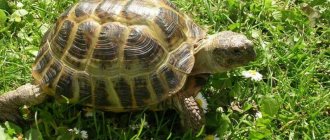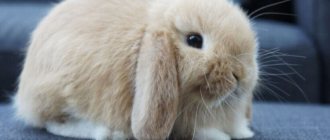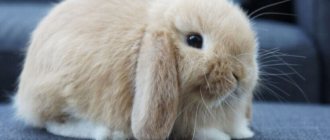- Wild animals
- >>
- Mammals
Gerbils are a large subfamily from the Old World. Its members are among the most distinct in the large rodent superfamily Muroidea, which includes mice, rats, voles, hamsters, gerbils and many other relatives. Members of the gerbil subfamily (Gerbillinae) have much in common. Most of them are diurnal, desert rodents. Gerbils are funny rodents that live in the wild and adapt well to home conditions. How and where gerbils live, everything about their methods of reproduction and other facts about their existence can be learned from this material.
Who is a gerbil
Gerbils are a subfamily of rodents. Outwardly they resemble a rat (but cuter). The hind legs are elongated, which allows gerbils to stand on their hind legs and jump well (large individuals can jump 3.5 m).
They lived quietly in the desert areas of Africa and Asia, until people noticed that animals are easy to keep, unpretentious in care and treat people well. The first exhibition of already domesticated gerbils took place in the 60s of the twentieth century.
Then people decided that the sandy color, suitable for camouflage in the desert, was not good enough for a pet. And they developed a huge variety of shades (we will return to the list of breeds later).
Varieties
There are many genera in the subfamily Gerbils, which include more than 110 species of rodents.
The most numerous of them:
- dwarf barefoot;
- bare-toed gerbil;
- dwarf;
- small;
- daytime;
- big;
- bushy-tailed gerbil;
- long-toed;
- South African dwarf.
Reference. The rodent population has greatly decreased, because it is threatened not only by natural enemies, but also by humans. 35 species of gerbils are listed in the International Red Book. Of these, four species are classified as endangered, and one species is in critical condition - the Chenga's gerbil.
Among the many varieties, only one has been tamed - the clawed one. It is also called Mongolian. This species belongs to the genus of small gerbils.
Behavior at home
Most species of gerbils sleep at night and are active during the day. But not all of them, so you can buy an animal that will not give you rest at night. Check with the seller what time of day rodents sleep.
It’s not for nothing that we mentioned activity - gerbils do not sit still. They are always in motion: you are unlikely to be able to hold them in your arms and stroke them for more than a few seconds (unless, of course, you force your pet, but this cannot be done).
Owning a gerbil is worth it for those who agree to watch the rodent more, rather than “squeeze” it.
However, gerbils have a very friendly nature. They get used to the owner and his voice. They can be litter trained and played with.
The animal treats people well.
We train to the toilet in several stages (select only one individual and train it immediately).
- When the gerbil has gone the wrong way, we take the balls of excrement and put them in the tray. We look at the reaction: if the toilet still does not attract rodents, move on to the next step.
- We keep an eye on the rodents, and as soon as we see that the pet has sat down to “go big,” we carefully pick it up and carry it to the tray. This requires patience and it won’t take you to get the hang of it right away, but it works. And it’s easier to care for the animals later - the time spent is worth it.
- If you manage to train one pet to use the toilet, the rest usually begin to repeat its actions. But if individual individuals “fundamentally” do not want to live in a “civilized” manner, repeat the steps for them separately.
Another important point: gerbils in nature live in large colony families, so they feel much better in company. The owner cannot replace their relatives, even if they devote a lot of time to caring for the pet and playing.
Keep your gerbils at least two at a time. If you are not going to breed them, get all females.
Animals should be together since childhood. If you later try to add a third animal to an already living couple (in a month, for example), they will not accept it.
A little about the relationship between gerbils. Sometimes they may struggle a little, but that's okay. But if the fight leads to blood, then immediately seat your pets. Not for long, for a few hours (you can’t separate for a long time, so as not to forget each other’s smell).
Now a little about the negative aspects of keeping gerbils.
They chew all the time. They chew everything they come across, so make sure that it is not your furniture (more on that below). When gerbils are not gnawing, they are digging; therefore, dirt is guaranteed (but this is not a problem if you choose the right house: we will tell you how to make cleaning easier).
Males also mark territory. Of course, the “amber” is not like the March cat, but keep this in mind. Females can too, but this is less common. There is no need to worry about this: gerbils have very little odor (less than, for example, hamsters).
Owner reviews
It is interesting to watch gerbils (they spin a wheel, rummage through sawdust, run through tunnels), but it is impossible to stroke or cuddle them: they are very nimble and jump out of your hands. Gerbils eat little and can feed on dry rat/hamster food. It is better not to keep them in cages - there they clump the fur on their noses and produce a lot of noise and debris. If you install a wheel, then only a metal one made of durable mesh; the house is made of ceramic.
Gerbils do not tolerate humidity: they cannot be washed, but you need to buy sand for chinchillas and pour it into a ball vase, where the mice will tumble, cleaning the fur . Some owners install ball drinkers, believing that the pet should still have access to water. By the way, many gerbils bite quite noticeably, biting into your finger until it bleeds. But the biggest drawback of the gerbil is its short lifespan.
What to buy for your pet
To comfortably keep a gerbil at home and care for it, you will need:
- house (cage, aquarium, terrarium, dune);
- “ware” for feeding and bathing;
- "sports equipment";
- a few little things necessary for proper care.
Now about everything in detail.
How to choose a house
The gerbil is very different from other domestic rodents, and therefore the requirements for its maintenance are specific. Based on them we will choose a house.
Cell
Pros:
- good ventilation,
- If the grille is removable, the cage is easy to clean.
Minuses:
- debris flying from the "excavations"
- pets get injured on the bars.
The cage is inexpensive, but it is not suitable for gerbils. As we already mentioned, they dig and chew all the time. The litter flies in all directions, and the wooden cage is simply “eaten up.” Even if the rods are steel, the animals then lose hair on their faces. If you still decide to take a cage, take it with a very high plastic tray (10 centimeters), so at least it will be easier to care for. We recommend a tray size for a pair of gerbils of at least 50x70 cm.
As an option - a terrarium cage with a high glass tray. But even this may not save you from garbage.
Aquarium, terrarium
Pros:
- garbage will definitely not fly out from behind such walls,
- You can watch your favorites play.
Minuses:
- not the most convenient option for care,
- obstructed air circulation,
- Gerbils jump high, so the aquarium needs to be covered.
More minuses than pluses. Changing the bedding is inconvenient; closing the lid reduces the air flow. But if you organize ventilation, then why not: it certainly won’t harm the gerbils. The only thing is that an aquarium of the required size will be expensive, and their shape is most often very elongated, designed for viewing fish “like on TV.”
Not a bad budget option.
Box for rodents (dune)
Pros:
- the filler does not spill out,
- Maintenance is simple – just open the lid,
- everything looks good
- easy to carry from place to place.
Minuses:
- not detected.
The best option, in our opinion. A potential problem arises if placed in direct sunlight (depending on the quality of the plastic, it may melt or release harmful substances), but this is not recommended in principle. In any case, choose decent companies in decent stores.
This is such a simple design. All that remains is to add accessories.
What to place in the house
- Toilet tray.
- Feed container. Place it higher, on a stand, otherwise you won’t be able to dig it out later. But there are breeders who sprinkle food on the bedding: it is believed that this method of obtaining food is more natural for gerbils. We won’t give preference to one option - try both, you’ll like one better.
- Drinking bowl of any design. Preferably with a metal spout (they chew!). The water needs to be changed every day to prevent the growth of bacteria. Gerbils hardly drink, but they need a supply of water just in case.
- Mineral and salt stones to replenish mineral deficiencies.
- Twigs for grinding teeth, otherwise the gerbils will find something to chew on. Choose wood from fruit trees (such as cherry, apple), as well as maple, acacia and willow.
- Running wheel. “Deaf”, not “ladder”. The hind legs and tail can get stuck in the gaps.
- House for sleeping. The gerbil needs a place where it can hide from prying eyes or just in the shade from the light. Perhaps your pets will not use it - sometimes they sleep in holes dug by themselves.
- Labyrinths, bridges and other similar “entertainment”. How much will fit, the more the better.
Filler
Sawdust will do. Just not the ones that look like dust, but small shavings. Do not use pine sawdust - its secretions sometimes lead to respiratory diseases. Aspen sawdust has proven itself well.
Many people use undyed, unscented paper, such as napkins.
If you want to make care easier, buy ready-made litters and bedding for gerbils. There are a huge number of varieties, it’s worth trying several to understand which ones you are more comfortable with and which ones your pets like.
One of the most important points for filler is the thickness of its layer. Gerbils love to dig and are constantly building new holes. We recommend pouring at least 10 cm, and preferably 15.
Home care
Gerbils have almost no smell, so the bedding can be changed once a week (of course, this depends on how many pets you have, so you will have to find out the exact number experimentally). Daily care is only required to remove leftover perishable food.
Who took the apple? I just hid it yesterday...
Choosing a pet
You have bought everything you need for care, allocated a place for your new pet, and now it’s time to move on to the most important thing - choosing the animal itself. First, let's take a look at the breeds. There are already more than 110 species of gerbils; we will focus on the most popular.
Gerbil breeds
Mongolian, aka clawed . The most common inhabitant of houses and apartments. The color of the coat is from coal black to snowy white - the breeders took care of diversity. There are even bluish shades. It grows up to 20 cm in length, weighs about 120 g. There is often a small tassel at the end of the tail.
Color options for the “Mongols” can be seen in the video below. But please ignore the advice that it is better to feed the rodent more often with sweets and tropical fruits.
Fluffy-tailed . This species is captivating with its chic tassel on the tail. In stores you usually only find the sand color. Length 10-13 cm.
Fluffy-tailed. This is a tail you can be proud of!
Short-eared . Red or brownish, white belly. Grows up to 12 cm.
Short-eared, but very cute.
Cheeseman's gerbil grows up to 11 cm, with a long tail. The most interesting feature is the huge (relative to the head) eyes.
You can drown in such eyes... Cheeseman's gerbil.
Persian . Quite a large individual (can grow up to 20 cm and gain weight of 170 g). Has a beautiful tassel at the end of the tail.
Persian beauty.
Let's go buy
Where to buy animals - from breeders or in a store - is everyone’s personal choice. We do not agree with the opinion that stores provide poor care and often sneak in already sick animals. Choose a store that is trusted (fortunately, reviews can be found on the Internet without any problems). In a good store and good care. At the same time, we met with private breeders who kept their pets in terrible conditions and tried to sell old gerbils or the wrong sex. Therefore, it does not matter where to buy, but make preliminary inquiries about the seller.
Below are the main points to pay attention to when purchasing.
- If you are going to take pets of different sexes, it is advisable that they be from different parents (to reduce the risk of genetic diseases).
- It is better to take same-sex dogs from the same litter so that they are already accustomed to each other.
- It's great if you can look at your parents. It will be immediately obvious whether they are active or lethargic, friendly or aggressive. Offspring are likely to inherit character traits.
- The best age to buy is 6-9 weeks. If you have no experience, it is difficult to determine age. Bring experienced gerbil keepers with you if possible. If not, rely on reliable sellers.
- Eyes, ears, nose should be free of discharge and inflammation.
- The coat should be smooth, clean and not matted anywhere (feel free to look under the tail).
- There should be no scratches, wounds or rashes on the skin.
- Listen to your breathing, usually if there is wheezing, you can hear it.
- A healthy gerbil is active and inquisitive, but if the animal is lethargic and does not respond to you, then it may be sick.
We are already waiting for new owners :)
Determining gender
Determining sex at such an early age (6-9 weeks, as we recommend for purchase) is difficult, but there are still signs.
If the age is closer to the upper limit, then in males, when you lightly press on the belly, the testes (testicles) protrude. By the way, this is one of the ways to check age, because... They will not perform for very young boys.
Another way. The distance between the anus and the genitals in females is much smaller, literally millimeters. Males have much more.
Description of the rodent
— Advertising —
The body length of the gerbil is 5-20 cm, the tail length is 6-24 cm. The weight ranges from 10 to 227 g. The tail is long, pubescent, in some species with a tassel at the tip. The muzzle is pointed or blunt in shape. The eyes are large, bulging, the ears are large. The back is dull, ocher-sandy or brownish in color, the belly is light. There are light spots on the head in the area of the ears and eyes.
What to feed
We adhere to the point of view that a pet’s diet should be close to natural. Based on this, we will make recommendations. Under natural conditions, gerbils prefer plants (both roots and above-ground parts), their seeds and, occasionally, small insects.
What can a gerbil do?
Nutrition can be divided into 3 groups:
- hay,
- cereals,
- succulent feed,
- greenery.
It is better to buy store-bought hay, because it is difficult to find clean grass and prepare it correctly. But if you have your own plot and you dry the grass yourself, make sure to keep it away from dampness - do not feed rotted hay.
Cereals are the basis of nutrition. You can make your own mixture of wheat, oats and barley (less wheat, more of the rest). Sometimes corn is added.
Juicy foods are vegetables and fruits. Gerbils happily eat carrots, beets, zucchini, and cucumbers. Fruits include apples and pears. Don't forget about berries: strawberries and raspberries.
For “greens,” add lettuce and celery (yes, it’s technically a vegetable). Another good idea is to add pumpkin seeds.
That's for me?
Give with caution
Some people add a lot of nuts and seeds to their gerbils' food. But this is not entirely good, because... They contain a lot of fat, so feed nuts with caution (as well as sunflower seeds).
The same goes for exotic fruits. For example, rodents love bananas, but they also need to be greatly limited.
There is also a “harmful” vegetable – cabbage. It is not poisonous, but often causes bloating and digestive problems in small animals.
Pets rarely need animal protein, but a couple of times a week you can give egg white (boiled), chicken breast or low-fat cottage cheese. Dried insects from a pet store will do. The only exception is pregnant females, they need protein daily.
What not to feed
In this list we boldly include everything that you eat yourself. Add sweets, baked goods, citrus fruits and very sweet fruits/berries (for example, grapes) to the list.
This is not for you, my friend, otherwise you will have health problems.
Ready-made feed
If possible, purchase ready-made food. They already take into account all wishes, plus manufacturers often add vitamin and mineral complexes to the composition.
Unfortunately, special food for gerbils is not available everywhere. You can take food for other rodents (for example, hamsters), just remove the nuts and sunflower seeds from there.
Habitat
Under natural conditions, gerbils live in the steppes of Mongolia (where their name comes from); they are also found in China, India, Asia, and North Africa. Among the less exotic places of stay are Transbaikalia, Ciscaucasia, and Kazakhstan. So the question “where do gerbils live” has many possible answers: small animals have remarkably adapted to life in steppes, semi-steppes, deserts and semi-deserts.
However, you don’t have to travel to buy a pet rodent; it can be purchased at almost any major pet store or from breeders. The second option is considered more preferable.
How to bathe a gerbil
The animal takes care of its hygiene on its own; it does not need help in caring for it. As a desert dweller, he hates water, so you should bathe him in water only if your pet is very dirty and cannot wash himself off.
And gerbils swim in the sand. To do this, you need to install a separate “bath” with fine sand in the house (the container must be larger than the animal so that it fits there entirely). This kind of sand is sold, for example, for chinchillas.
It is better to install a “closed” bathtub, otherwise there will be sand everywhere. For example, you can put an empty jar on its side or buy a special one.
Chic but impractical bathtub.
Prohibited Products
If peanuts or sunflower seeds are present in the grain mixture, they should be removed or the feed should not be used. Fats in large quantities are harmful to small pets.
It is better not to include legumes, bean pods, and lettuce leaves in the diet of animals. These products do not contain substances that are beneficial to them.
It is forbidden to feed gerbils potatoes, peppers, radishes, garlic, onions, sorrel, ginger, and avocado.
Important! You can give your pets cherries, but you must first remove the seeds from the berries.
Pet diseases
Gerbils tend to be in good health compared to other rodents, but it doesn't hurt to be aware of common diseases and their symptoms. Do not self-medicate - immediately contact a veterinarian (a rodent specialist is called a ratologist).
- If the eyes are watery and purulent, then it is most likely conjunctivitis. Protect the animal from dust, hide it in a house out of direct rays of light, and as soon as possible, take it to the clinic.
- Nasal discharge may indicate an allergy. Just in case, immediately change the type of bedding, think about what in the diet could give such an effect. If there is no change in a couple of days, call your veterinarian.
- If the belly suddenly begins to increase in size and does not go away, all this is accompanied by diarrhea (i.e. it is not bloating), then this may be Tyzzer's disease (fluid accumulates in the abdominal cavity). The reason is missing food. Most often, there is nothing you can do to help here, so make sure the food is fresh and the house is clean.
Gerbils also suffer from epilepsy and cancer, but in these cases little depends on us.
Regarding vaccination. There are no special medications for gerbils. But if your pet does not come into contact with other people’s rodents, then there is nothing to be afraid of.
Treats
Animals in captivity are deprived of the opportunity to independently balance their diet. This responsibility falls on the shoulders of the gerbil owners. By nature, fluffy beauties are big gourmands, and without proper control, they can harm their health with excessive or harmful meals.
Gerbils love oily sunflower seeds and a variety of nuts. But it is better to give such treats to animals infrequently, so as not to overload their liver. It is much safer to offer rodents millet sprouts or small seeds that contain oils that are beneficial for their fur.
How to name a boy and girl gerbils
Do rodents even need to be named? We think so. Of course, this is not a puppy who will happily run to you when called. But, at a minimum, constant contact with the animal allows the pet to get used to the owner’s voice.
Names chosen according to the color of the pet are very common. For example, for “classic” reddish gerbils the following names are suitable:
- Peach,
- copperhead,
- Zolotse,
- Ray.
For black pets: Smoke, Coal, Night.
Or simply translate the color into another language:
- Black,
- Blanco,
- Negro,
- Gris.
For very nimble rodents, the following names are suitable:
- Zipper;
- Horse;
- Jumper;
- Meteor;
- Zinger.
But you shouldn’t force yourself into any limits. If you call a boy by the completely human name “Egor”, it will sound original. Also, observe the behavior and habits of your pet: perhaps a nickname will come to mind by itself.
What would you call us?
How to teach to hold hands and play
The most inappropriate thing about hand training is rushing. Be patient and do not pick up the animal at all for the first few days. After 3-4 days, try hand-feeding. Once the gerbil understands that you are not threatening it, it will calmly begin to eat in your hands.
Approach and stand so that no shadow falls on your pet - he may instinctively mistake you for a predator.
The next step is to start picking it up. We carefully place both palms under the pet, closing them from below in the form of a boat, and then lift it up. Be careful, gerbils do not sit still, she may try to run away and get injured.
Never pick up a gerbil by its tail, as it may break.
As soon as the animal stops being afraid of you, everything will go by itself. He will come running to you, climb into your sleeves and trouser legs, onto your shoulders and even onto your head. This is a very inquisitive and playful animal. During such games, never scream or frighten your pet - he may bite out of fright.
How many years do domestic gerbils live?
On average, gerbils with good care live up to 3 years, less often - up to 4. Unfortunately, even if you follow all the care recommendations, you won’t be able to significantly extend your pet’s life. But you can cut it a lot if you don't follow the advice.
Another advantage of proper care is that those rodents that have been carefully looked after usually spend the last year of their lives more actively, while improper nutrition and maintenance lead to a whole “bouquet” of chronic diseases that begin to torment the animal in the last year of life.
Walks
A short walk around the apartment will only benefit the gerbils. But at the same time, they should always be supervised: having found a secluded corner, mice may consider this their new home, from which it will be difficult to remove them.
The love of gnawing everything that catches the eye can lead to the death of an animal left without supervision.
Reproduction
Before buying different-sex gerbils for breeding, pay attention to this fact.
A gerbil can give birth to an average of 5-6 babies every month. Total for the year is 60-70. And this figure does not take into account that the offspring will also begin to bear offspring in 3-4 months if you do not have time to distribute them to new owners.
Therefore, if you do not have a sales market, we do not recommend taking different sexes. But if you still decide, read the information below carefully.
Every birth you will find 4-7 such “surprises”.
When can I knit?
Gerbils reach sexual maturity 3-4 months after birth. All that is required of you is to place individuals of different sexes in one cage, then nature will do its job.
It is advisable to mate the female before reaching the age of 1 year. If the girl is over 20 months old, childbirth is strictly not recommended.
How long does pregnancy last
The duration of pregnancy in gerbils is 24-28 days. The older the mother, the longer she bears the offspring. When breeding without control, it happens that the female becomes pregnant already while feeding previous children. Then she can wear it for up to 40 days.
Signs of imminent labor
Before giving birth, the female begins to arrange a secluded nest and most often becomes calmer and less active. At this time it’s time to stop caring for the house, just add food.
Newborn care
Both father and mother participate in caring for the babies, so it is not necessary to remove the male. In the first two weeks, it is better not to touch the little ones at all. Afterwards you can determine the gender. After another month (i.e. at the age of 6 weeks), begin distributing the babies to new owners.
Did you like the article?
If the material was useful, share it on social networks (buttons below), it will also help someone else. If we forgot something or you have questions, write in the comments, we will try to add everything to the article.
What should a cell be like?
It should be exclusively metal, since these representatives of the mouse family love to chew everything that catches their eye, which means, sooner or later, they will get to their home. In addition, it is worth considering that these rodents have a great need for free space, which is important to remember when choosing the size of the future home for your pet.
It is advisable to cover the bottom of the cage with a thick layer of dry grass or shredded paper. The layer should be of such thickness that the animal has the opportunity to bury itself completely under it. It is not recommended to use cotton wool as bedding to avoid it getting into the pet’s stomach.











